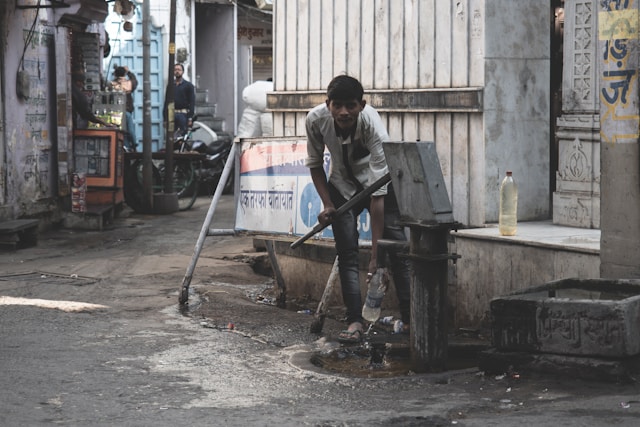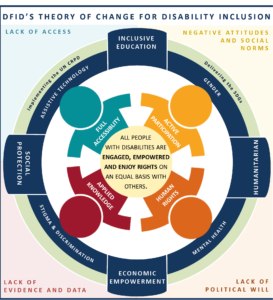By Theresa Jose
India is united by its diverse cultures, languages and religions but divided by a caste system. This is a deeply ingrained social structure that determines occupation, status, and access to resources. While the Brahmins occupy the highest position, Dalits (formerly known as untouchables) occupy the lowest and they face great discrimination due to their position in the social hierarchy. Consequently, the ramifications of caste extend beyond the socioeconomic disparity but also to how citizens experience environmental challenges like climate change and natural disasters. The marginalised communities are disproportionately impacted by environmental action while the discrimination and exploitation they face due to environmental injustices are overlooked by mainstream society. This harsh reality of the marginalised communities especially the Dalits in India gives rise to the phenomenon of Environmental Casteism which addresses the intersection between caste-based discrimination and environmental injustice. Environmental injustice perpetuates unequal access to clean water and air which results in heightened exposure to pollution and other hazards by the marginalised communities compared to the higher castes within the society. A major factor contributing to these injustices is spatial segregation. The marginalised groups are often relegated to the peripheral spaces away from the affluent neighbourhoods and they are exposed to the harmful effects of industries, factories and landfills where they reside and work. Consequently, they bear a disproportionate burden of health risks and life-threatening conditions.
Despite the illegality of caste-based discrimination, it persists in many parts of the country. The marginalised individuals remain oppressed with them being forced into dehumanising jobs like manual scavenging. Despite the skills, they face obstacles to alternate jobs due to caste prejudice. This points out the inability of the marginalised section to escape the caste system and the immediate need for a societal transformation (Taylor, 2022). Manual scavenging exemplifies environmental casteism as it addresses the intersection between caste-based discrimination and environmental injustice. Despite being illegal still, people born into a lower caste were forced to do this dehumanising work. The Nara-Maveshi movement held in the 1950s and 1960s was the Chamar caste’s protest to the traditionally assigned jobs which were dehumanising tasks. However, their wish for alternate jobs where met with opposition, including economic sanctions and denial of employment opportunities (Sharma, 2022). Consequently, this has led to perpetual poverty, poor health and social exclusion for Dalits whose issues remain invisible to the mainstream society. To break free from this cycle of oppression there is a need for a transformative shift in societal attitudes and action.
The marginalised communities have long struggled to get equal access to clean water. The Mahad Satyagraha of 1927, led by Dr. B.R Ambedkar was one of the earliest civil rights movements. Dalits gathered at the Chavdar Lake in Mahad, Maharashtra to assert their moral and legal right to access water and challenge the discriminatory norms practised by the higher caste. Despite the victory of the Mahad struggle the present reality shows that the marginalized communities still face difficulties in securing equal water access (Kashwan, 2024). In North Gujarat, the marginalised communities have historically relied heavily on groundwater for their needs. However, the construction of tube wells that are often built on private lands owned by upper castes has exacerbated water scarcity. These communities, unable to own land struggle for groundwater as it is now in the control of the upper caste who are known as “Water Lords”. This shows the reality of how social structure continues to dictate access to fundamental resources and perpetuate inequalities and exploitation. The very source that sustains life becomes a tool of oppression which fuels environmental injustice (Kashwan, 2024).
As discussed earlier, deep-rooted caste-based discrimination points out that Environmental casteism remains a prominent issue in our country. This phenomenon mainly arises due to the absence of Dalits in Environmental studies as the majority of the researchers and scholars are from the upper castes which leads to them overlooking the experiences and perspectives of the marginalized (Waghre, 2023). Srilata Sicar, in a lecture on Environmental casteism, points out that people when discussing environmental policies and caste justice in India ignore the impact of the caste system which is to be considered while addressing the environmental issues. She also explains the idea of Bourgeoisie environmentalism, a phenomenon where the upper class are concerned about the environment and tries to practice eco-conscious activities but tends to overlook the setting up of businesses and industries, the major polluters which exacerbate this issue. The marginalised communities are disproportionately affected by disasters due to the lack of well-planned infrastructures which result in loss of houses, livelihoods and even loss of lives (Chhaya, 2024). Ignoring the caste perspectives’ interaction with the environment exacerbates structural inequalities as marginalized communities are denied their fundamental right to access resources. According to Suprakash Majumdar, a Pulitzer-Grantee Journalist, climate-related disasters get categorized based on who gets affected by it, if it is the low-income areas and people from low-castes who get affected it may be overlooked but if it impacts the upper-castes then it is declared as a disaster by the government. The triangle model of the caste system is still practised when it comes to urban planning, the Brahmins reside in the safest area and the lower castes live in the periphery of the city which makes them the most vulnerable to climate destruction (Chhaya, 2024). For instance, the cyclone that struck Orissa and Tamil Nadu impacted the landless Dalits, and farm workers the most as these people were the ones who were living on the outskirts of the villages, and were not provided with relief materials which shows how caste can influence even the distribution of compensations (“Environmental Cateism”, 2021). The lack of representation of Dalits in influencing environmental policies exacerbates their issues with their needs being overlooked by the government. So it is important to acknowledge the intersectionality of caste-based discrimination and environmental injustices so that it could lead to a more equitable society.
The influence of caste in ecological experiences was first recognised by Gati Omvedt an anti-caste scholar, in her essay “Why Dalits Dislike Environmentalists” talks about the divergent ideologies of the anti-caste movement and environmental movement which led to the Dalits resenting the environmental activism in India. According to her, the Indian environmentalist supported Gandhi’s opinion of the romanticization of rural Indian villages, where everyone in the village lives in harmony. However, this was struck down by the anti-caste activists who supported Ambedkar’s perspective of villages being breeding grounds for perpetuating social hierarchy, caste-based prejudices and exclusion (Prasad, 2022). This clear contrast underscores the need for recognising and addressing environmental casteism by integrating the voices of marginalized communities and incorporating their knowledge which will help achieve environmental justice for all irrespective of their position in society.
Environmental casteism is an issue that needs immediate attention. Marginalised communities are disproportionately burdened by environmental hazards while being denied access to resources mainly due to their social position. The article also points out the need to acknowledge marginalised communities’ voices and experiences, which will play a pivotal role in addressing the injustice they face. Understanding the complex relationship between caste and the environment could dismantle caste-based environmental disparities and achieve environmental justice for all.
References
Environmental casteism. NICKELED AND DIMED. (2021, July 14). https://nickledanddimed.com/2021/07/14/environmental-casteism/
Kashwan, P. (2024, March 22). Access to water is a crisis for the powerless. Down To Earth. https://www.downtoearth.org.in/blog/water/access-to-water-is-a-crisis-for-the-powerless-95180#:~:text=Where%20state%20supply%20of%20water,access%20to%20public%20water%20supplies
Prasad, I. (2022). Towards Dalit ecologies. Environment and Society (Print), 13(1), 98–120. https://doi.org/10.3167/ares.2022.130107
Sharma, M. (2022). Caste, environment justice, and intersectionality of Dalit–Black ecologies. Environment and Society, 13(1), 78–97. https://doi.org/10.3167/ares.2022.130106
Taylor, S. (2022, June 27). The struggle to challenge India’s caste system remains real, still. ABC News. https://www.abc.net.au/news/2022-06-28/struggle-to-challenge-indias-caste-system/101185772
Waghre, A. (2023, August 14). Caste’s Role in Shaping Water Access Is Missing From Indian Environmental Discourse. The Wire. https://thewire.in/caste/caste-water-access-missing-india-environmental-discourse






